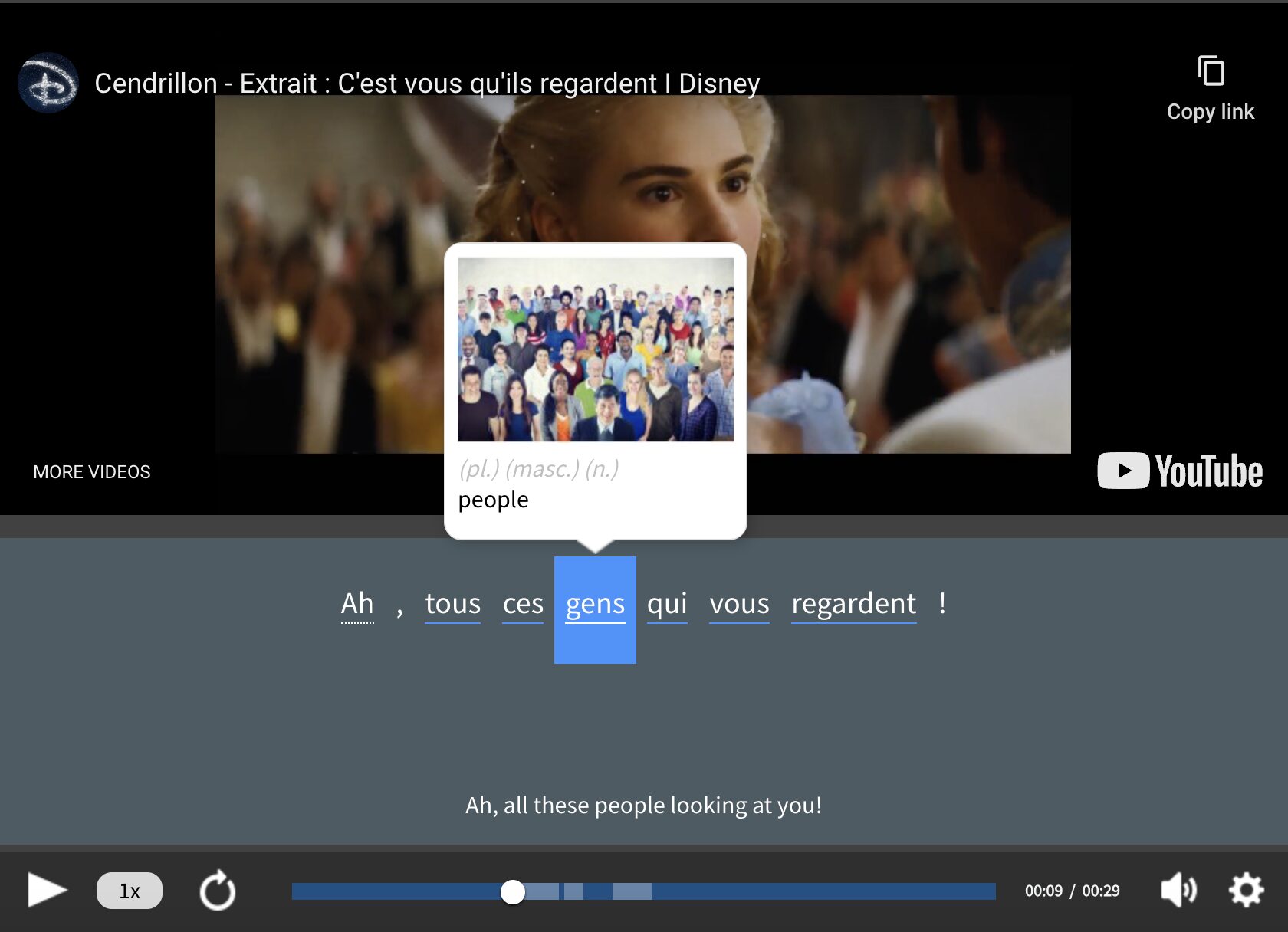Contents
How to Form and Use the French Pluperfect

In French, the pluperfect (plus-que-parfait) indicates an action in the past that occurred before another action in the past. The second past action may or may not be explicitly expressed. If it is, it’s usually expressed in the passé composé or the imparfait.
In English, the pluperfect is like saying “had already” or “was already.” In affirmative sentences, the pluperfect is often—but not always—accompanied by the adverb déjà (already). Pas encore (not yet) is often used in negative sentences.
Download: This blog post is available as a convenient and portable PDF that you can take anywhere. Click here to get a copy. (Download)
How is the Pluperfect Formed?
The formula for conjugating the French pluperfect is:
Auxiliary verb (avoir or être) in the imperfect tense + past participle of the main verb
The pluperfect is a compound tense, which means it has an auxiliary verb and a past participle.
In the pluperfect, the auxiliary verb is conjugated in the imparfait, which can describe events in the past that happened for an undetermined amount of time.
Here’s a chart of avoir and être in their imperfect forms:
| Pronoun | Avoir | Être |
|---|---|---|
| Je | Avais | Étais |
| Tu | Avais | Étais |
| Il/Elle/On | Avait | Était |
| Nous | Avions | Étions |
| Vous | Aviez | Étiez |
| Ils/Elles | Avaient | Étaient |
Because the pluperfect is a compound tense, certain rules regarding agreement apply. When the auxiliary verb is être (to be), the past participle must agree with the subject.
When the auxiliary verb is avoir (to have), the past participle often agrees with its direct object.
For the negative construction of the pluperfect, the negative structure (ne … pas, for example) always goes around the auxiliary verb and immediately before the past participle.
So the formula for negative sentences would be:
Ne + Auxiliary verb (imperfect) + pas + Past participle
Let’s take a look at some examples, shall we?
Here are some cases where the second action is explicitly mentioned:
J’avais déjà mangé quand tu m’as invité au restaurant. (I had already eaten when you invited me to the restaurant.)
Le film commençait à 18h mais j’étais arrivé à 16h pour avoir une bonne place. (The film started at 6 p.m. but I had arrived at 4 p.m. to have a good seat.)
Now let’s take a look at the negative constructions:
Je n’avais pas encore mangé quand tu m’as invité au restaurant. (I had not yet eaten when you invited me to the restaurant.)
Nous voulions t’appeler parce que nous ne t’avions pas vu hier. (We wanted to call you because we didn’t see you yesterday.)
Here’s an example where the latter action is implied:
J’étais déjà sorti. (I had already left.)
A sentence like this relies heavily on context. It could be a response to the question, “Why didn’t you pick up the phone?” and the implied action that happened after this would be the telephone call.
If the action were to be explicitly stated, we could write a sentence like this:
J’étais déjà sorti quand tu as téléphoné. (I had already left when you called.)
When to Use the French Pluperfect
1. When an action happened before another action
We use the French pluperfect to talk about something that happened in the past before another action happened after. The action that happened first is in the pluperfect. It’s like saying “had happened” in English, like in the examples we just saw above:
J’étais déjà sorti quand tu as téléphoné. (I had already left when you called.)
Je n’avais pas encore mangé quand tu m’as invité au restaurant. (I had not yet eaten when you invited me to the restaurant.)
2. In si clauses
The pluperfect is also used in si (if) clauses to express a hypothetical situation in the past whose result is contrary to what has actually happened. Using the pluperfect with si clauses can also convey a sense of regret or the wish that something had happened, but didn’t.
When used in si clauses, the pluperfect is always paired with the past conditional. It’s important to note that the conditional clause never—I mean never—is preceded by si (if). The structure is always si + pluperfect, past conditional:
Si tu m’avais demandé, je serais venu. (If you had asked me, I would have come.)
Si j’avais su, je l’aurais aidé. (If I had known, I would have helped.)
When to Not Use the French Pluperfect
In most cases, the pluperfect in English and French overlap. Unfortunately, though, this is not always the case. Here are two cases where they don’t.
1. With depuis
In French, depuis (since) is usually used with the imperfect (and not the pluperfect). In its English translation, the pluperfect would be used.
Les lecteurs attendaient depuis deux ans le nouveau livre de David Foenkinos. (The readers had been waiting for two years for David Foenkinos’ new book.)
The construction avait attendu would not work here.
2. With venir de
The expression “had just done something” is generally translated in French as venir de in the imperfect.
Aurélie venait de s’allonger quand Michel lui a téléphoné. (Aurélie had just laid down when Michel called her.)
Again, the pluperfect construction would not be used here.
In this sentence and the David Foenkino sentence, think about the temporal dimension.
The actions in the first clause (the readers’ waiting for Foenkinos’ new book and Aurélie’s lying down) are not necessarily completed, but rather ongoing. The first sentence implies that David Foenkinos’ book is not yet out. In the second sentence, there’s a bit of ambiguity regarding whether Aurélie answered Michel’s call or not.
If Aurélie had already laid down (and then gotten up, as in a nap), when Michel called, we would use the pluperfect and the sentence would be:
Aurélie s’était déjà allongée quand Michel lui a téléphoné. (Aurélie had already laid down when Michel called her.)
How to Practice the French Pluperfect
Checking out reference guides, listening to podcasts and doing quizzes are surefire active ways to perfect your pluperfect skills. Here are a few good resources to use.
Grammar books
“French Grammar the Easy Way” by Fabienne-Sophie Chauderlot has a really great chapter on the pluperfect complete with a diagram detailing the chronology of le passé composé, l’imparfait and our friend le plus-que-parfait, making it ideal for those of you who are visual learners.
Another great resource is “The Everything French Grammar Book: All the Rules You Need to Master Français” by Laura K. Lawless, an oldie but goodie.
What’s great about this book is that it’s written by a non-native French speaker, which means she’s aware of the difficulties English speakers may encounter when learning French grammar such as the pluperfect.
Podcasts
Once you’ve got the pluperfect down pat in theory, it’s important to get comfortable with it in action. Listening to native French podcasts is a great way to do this.
Along with picking out instances of when the pluperfect is used, another good exercise is to listen to a podcast all the way through while taking notes on the chronology of events mentioned. Afterward, imagine you’re summarizing what you’ve heard, using the pluperfect when applicable. Not only will your listening skills improve, but you’ll also improve your cultural literacy.
Authentic media
Similar to podcasts, spending time in authentic media made for native speakers is one of the best ways to hear the pluperfect in action. I recommend using a resource like FluentU, which lets you click on grammar structures and words in the subtitles to study them.
FluentU takes authentic videos—like music videos, movie trailers, news and inspiring talks—and turns them into personalized language learning lessons.
You can try FluentU for free for 2 weeks. Check out the website or download the iOS app or Android app.
P.S. Click here to take advantage of our current sale! (Expires at the end of this month.)
Quizzes
Online French quizzes are a great way to test yourself on the pluperfect as well as the past participles of verbs.
To get started, check out this quiz, in which you practice translating expressions such as “I had done” and “I had wanted,” as well as this quiz on irregular past participles.
You’ll kill two birds with one stone: Not only will your plus-que-parfait be perfect, but you’ll get to practice the passé composé, too.
Well, that covers the pluperfect. Now, à toi de jouer (your turn)!
Getting the pluperfect down pat is a matter of practice, practice, practice. That is, after all, what makes perfect—or, should I say, plus-que-parfait.
Download: This blog post is available as a convenient and portable PDF that you can take anywhere. Click here to get a copy. (Download)
And One More Thing...
If you like learning French at your own pace and from the comfort of your device, I have to tell you about FluentU.
FluentU makes it easier (and way more fun) to learn French by making real content like movies and series accessible to learners. You can check out FluentU's curated video library, or bring our learning tools directly to Netflix or YouTube with the FluentU Chrome extension.
One of the features I find most helpful is the interactive captions—you can tap on any word to see its meaning, an image, pronunciation, and other examples from different contexts. It’s a great way to pick up French vocab without having to pause and look things up separately.
FluentU also helps reinforce what you’ve learned with personalized quizzes. You can swipe through extra examples and complete engaging exercises that adapt to your progress. You'll get extra practice with the words you find more challenging and even be reminded you when it’s time to review!
You can use FluentU on your computer, tablet, or phone with our app for Apple or Android devices. Click here to take advantage of our current sale! (Expires at the end of this month.)












